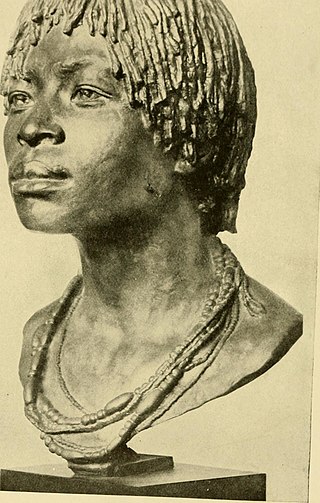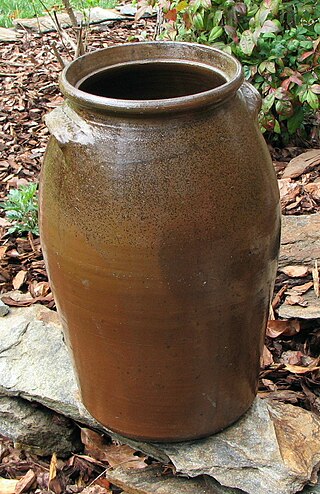A mojo, in the African-American spiritual practice called Hoodoo, is an amulet consisting of a flannel bag containing one or more magical items. It is a "prayer in a bag", or a spell that can be carried with or on the host's body. Alternative American names for the mojo bag include gris-gris bag, hand, mojo hand, toby, nation sack,conjure hand, lucky hand, conjure bag, juju bag, trick bag, tricken bag, root bag, and jomo. The word mojo also refers to magic and charms. Mojo containers are bags, gourds, bottles, shells, and other containers. The making of mojo bags in Hoodoo is a system of African-American occult magic. The creation of mojo bags is an esoteric system that involves sometimes housing spirits inside of bags for either protection, healing, or harm and to consult with spirits. Other times mojo bags are created to manifest results in a person's life such as good-luck, money or love.

A Simbi is a water and nature spirit in traditional Kongo spirituality, as well as in Hoodoo.

Hoodoo is a set of spiritual practices, traditions, and beliefs that were created by enslaved African Americans in the Southern United States from various traditional African spiritualities, Christianity and elements of indigenous botanical knowledge. Practitioners of Hoodoo are called rootworkers, conjure doctors, conjure man or conjure woman, root doctors, Hoodoo doctors, and swampers. Regional synonyms for Hoodoo include conjure or rootwork. As a syncretic spiritual system, it also incorporates Islam brought over by enslaved West African Muslims and Spiritualism. Scholars define Hoodoo as a folk religion. Folk religions are syncretic traditions between two or more cultural religions, in this case African indigenous spirituality and Abrahamic religion.

Stoneware is a broad term for pottery fired at a relatively high temperature. A modern definition is a vitreous or semi-vitreous ceramic made primarily from stoneware clay or non-refractory fire clay. End applications include tableware, decorative ware such as vases.

The Kongo people are a Bantu ethnic group primarily defined as the speakers of Kikongo. Subgroups include the Beembe, Bwende, Vili, Sundi, Yombe, Dondo, Lari, and others.

Nkisi or Nkishi are spirits or an object that a spirit inhabits. It is frequently applied to a variety of objects used throughout the Congo Basin in Central Africa, especially in the Territory of Cabinda that are believed to contain spiritual powers or spirits. The term and its concept have passed with the Atlantic slave trade to the Americas.

A jug is a type of container commonly used to hold liquids. It has an opening, sometimes narrow, from which to pour or drink, and has a handle, and often a pouring lip. Jugs throughout history have been made of metal, and ceramic, or glass, and plastic is now common.

David Drake, also known as "Dave Pottery" and "Dave the Potter," was an American potter and enslaved African American who lived in Edgefield, South Carolina. Drake lived and worked in Edgefield for almost all his life.

Sancai is a versatile type of decoration on Chinese pottery using glazes or slip, predominantly in the three colours of brown, green, and a creamy off-white. It is particularly associated with the Tang dynasty (618–907) and its tomb figures, appearing around 700. Therefore, it is commonly referred to as Chinese: 唐三彩 Tang Sancai in Chinese. Tang sancai wares were sometimes referred in China and the West as egg-and-spinach by dealers, for their use of green, yellow, and white, especially when combined with a streaked effect.

Catawba Valley Pottery describes alkaline glazed stoneware made in the Catawba River Valley of Western North Carolina from the early 19th century, as well as certain contemporary pottery made in the region utilizing traditional methods and forms.

A Bartmann jug, also called a Bellarmine jug, is a type of decorated salt-glazed stoneware that was manufactured in Europe throughout the 16th and 17th centuries, especially in the Cologne region, in what is today western Germany. The characteristic decorative detail is a bearded face mask appearing on the lower neck of the vessel. They were made as jugs, bottles, and pitchers in various sizes and for a multitude of uses, including storage of food or drink, decanting wine and transporting goods.

Jerry Dolyn Brown was an American folk artist and traditional stoneware pottery maker who lived and worked in Hamilton, Alabama. He was a 1992 recipient of a National Heritage Fellowship from the National Endowment for the Arts and a 2003 recipient of the Alabama Folk Heritage Award. His numerous showings included the 1984 Smithsonian Festival of American Folklife with his uncle, potter Gerald Stewart.

Ceramics in Mexico date back thousands of years before the Pre-Columbian period, when ceramic arts and pottery crafts developed with the first advanced civilizations and cultures of Mesoamerica. With one exception, pre-Hispanic wares were not glazed, but rather burnished and painted with colored fine clay slips. The potter's wheel was unknown as well; pieces were shaped by molding, coiling and other methods,
Colonoware, which is alternately called Colono-Indian Ware, is a type of earthenware created by African Americans along the Atlantic Coast ranging north and south from Delaware to Florida and as far west as Tennessee and Kentucky beginning in the Colonial Era. It was first identified by the British archaeologist Ivor Noël Hume and shortly thereafter published in a book he wrote.

Nkondi are mystical statuettes made by the Kongo people of the Congo region. Nkondi are a subclass of minkisi that are considered aggressive. The name nkondi derives from the verb -konda, meaning "to hunt" and thus nkondi means "hunter" because they can hunt down and attack wrong-doers, witches, or enemies.

Redware as a single word is a term for at least two types of pottery of the last few centuries, in Europe and North America. Red ware as two words is a term used for pottery, mostly by archaeologists, found in a very wide range of places. However, these distinct usages are not always adhered to, especially when referring to the many different types of pre-colonial red wares in the Americas, which may be called "redware".

Persian pottery or Iranian pottery is the pottery made by the artists of Persia (Iran) and its history goes back to early Neolithic Age. Agriculture gave rise to the baking of clay, and the making of utensils by the people of Iran. Through the centuries, Persian potters have responded to the demands and changes brought by political turmoil by adopting and refining newly introduced forms and blending them into their own culture. This innovative attitude has survived through time and influenced many other cultures around the world.
A memory jug is an African American folk art form that memorializes the dead. It is a general term for a vessel whose surface is adorned with an assortment of broken china, glass shards, and small objects, especially items associated with a dead person. They are also called forget-me-not jugs, mourning jugs, memory vessels, spirit jars, whatnot jars, ugly jugs, and whimsy jars.

Border ware is a type of post-medieval British pottery commonly used in the South of England, London and then later in the early American colonies beginning in the sixteenth and ending in the nineteenth century with a height of popularity and production in the seventeenth century. The lead-glazed, sandy earthenware was produced from kilns along the border between Hampshire and Surrey. There are two classes of Border ware, fine whitewares and fine redwares.
Thomas W. Commeraw, also known erroneously as Thomas H. Commereau, was an early 19th century African-American potter and businessman.

















